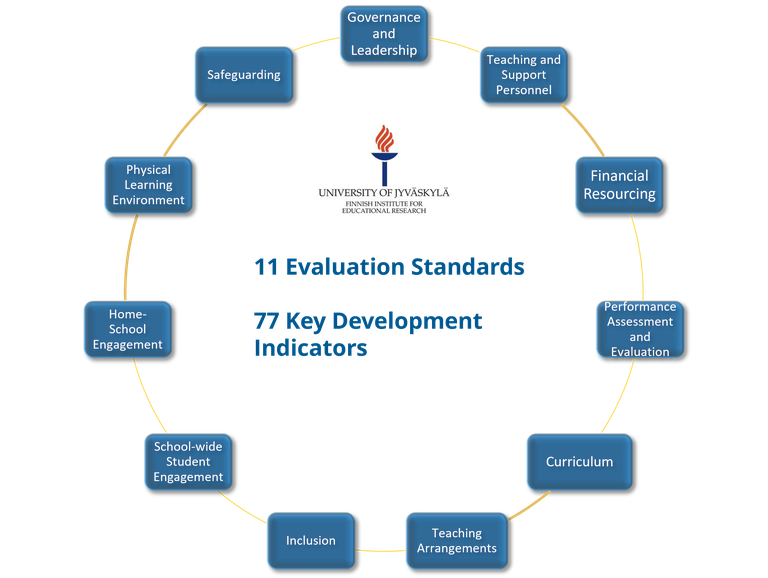Evaluation criteria

The audit is done based on highly validated criteria. The audit process has been piloted and carried out in Qatar-Finland International School in 2019.
The audit focuses on 11 evaluation standards comprised of 77 key development indicators. The standards are the following:
- Standard 1. Governance and Leadership (11 key development indicators)
The school’s operations are in alignment with clearly defined statements of vision, mission, teaching and learning objectives, in accordance with the educational ethos manifest in The Finnish Quality Criteria (Framework) for Basic Education (2012) and Finnish National Core Curriculum (2014) - Standard 2. Teaching and Support Personnel (11 key development indicators)
The school employs qualified and competent teaching and support personnel to fulfil the vision, mission, teaching and learning objectives. - Standard 3. Financial Resourcing (3 key development indicators)
The school has medium to long-term operable financial plans and that are consistent practices to resource fulfilment of the school’s vision, mission, teaching and learning objectives. - Standard 4. Performance Assessment and Evaluation (5 key development indicators)
The school has procedures for reviewing and giving feedback on individual student learning performance, including use of a Personal Learning Plan. - Standard 5. Curriculum (9 key development indicators)
The school implements a curriculum, consisting of a blend of subjects, which is in accordance with the Finnish educational ethos and the strategic development goals. - Standard 6. Teaching Arrangements (9 key development indicators)
The school provides teaching that is arranged in a way that promotes the learning, growth, and development of each student according to their social, physical, and emotional needs, and abilities. - Standard 7. Inclusion (3 key development indicators)
The school has an operational plan, and sufficient resources, for identifying special or specific needs of students, and provides support for their learning, growth and wellbeing to enhance their access to and participation in the curriculum. - Standard 8. School-wide Student Engagement (2 key development indicators)
The school offers and encourages student involvement in age-appropriate opportunities to influence and participate in activities that complement the vision, mission, teaching and learning objectives. - Standard 9. Home-school Engagement (4 key development indicators)
The school actively fosters communication and cooperation with guardians enabling information flow, interchange of opinions, and engagement. - Standard 10. Physical Learning Environment (11 key development indicators)
The school provides a physical learning environment that effectively supports the vision, mission, teaching and learning objectives. - Standard 11. Safeguarding (9 key development indicators)
The school provides a learning environment that is safe, and which provides regularly maintained health and safety services and plans in case of various types of emergencies.